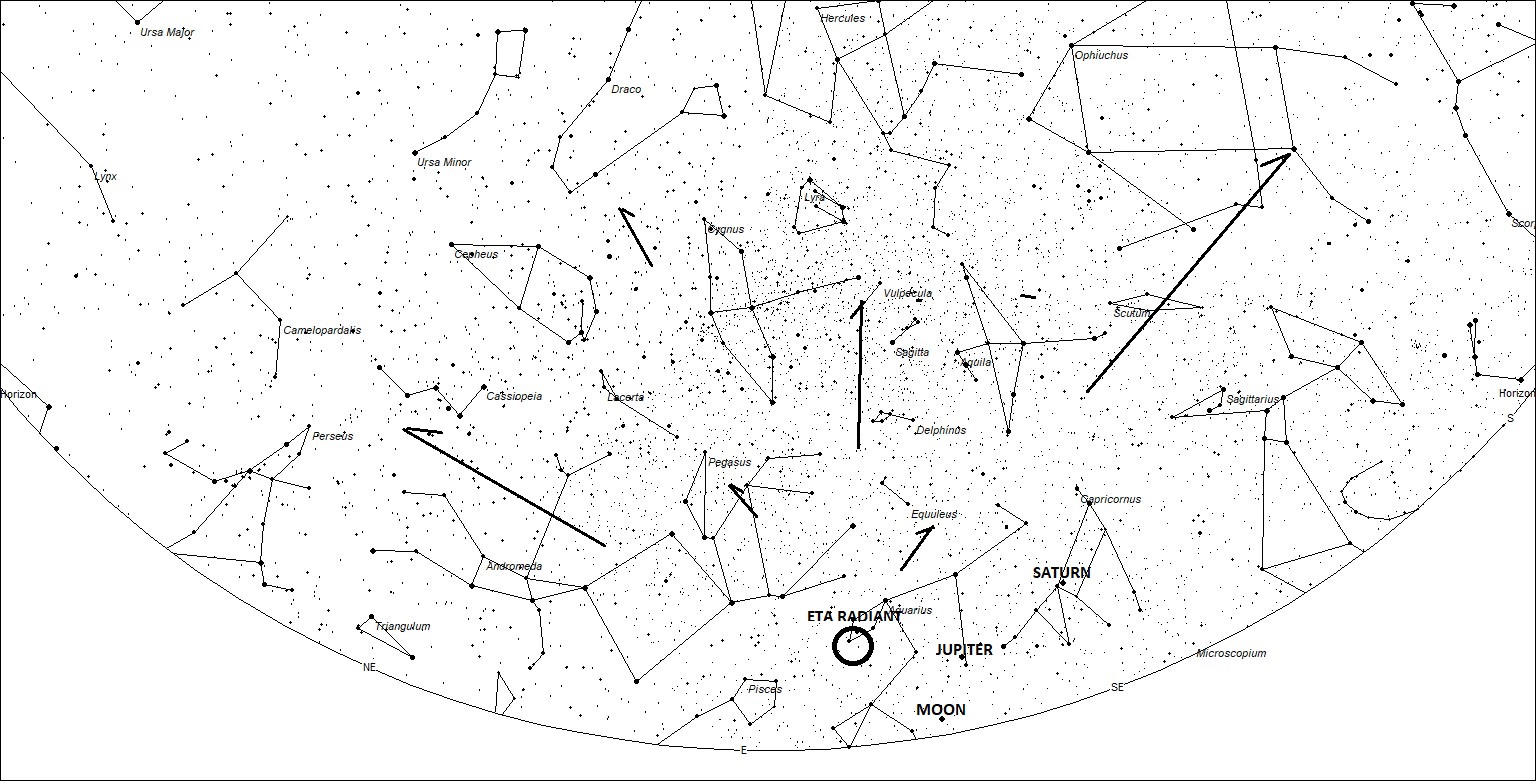Halley’s Comet particles
Many of our readers were born after the last appearance of Halley’s comet in 1986. They will have to wait until 2061 for it’s next appearance. For those of us who did see it 34 years ago, most of us will not be around for it’s return in 2061. We can all take solace in the fact that remnants from Halley’s comet are circling the solar system, often far from the comet, and encounter the Earth twice each year in the form of meteors from the eta Aquariids of May and the Orionids of October. So while we cannot view the comet itself, we can see bits of ice and dust it has left behind over the past few millennia.
The Orionids are the inbound particles of Halley’s comet while the eta Aquariids are the outbound particles. It should be noted that the particles we see as meteors separated from the comet many hundreds of years ago as the current orbit of the comet does not cross the orbit of the Earth.
Eta Aquariids in 2021 will peak on May 4/5
Since the eta Aquariids are the outbound particles of the Halley’s comet, we see them to the west of the sun from April 19-May 28 each year. This positioning only allows these meteors to be seen on the morning side of Earth. To make matters more restrictive, the source of these meteors, located in the constellation of Aquarius, does not clear the horizon until 2:00 to 3:00am local daylight saving time as seen from the lower northern latitudes. Viewing circumstances are even worse for mid and upper northern latitudes as the rising of the radiant and the start of morning twilight become closer together as one moves northward. Viewing circumstances for the eta Aquariids are best for those located in the southern tropics where the source of these meteors rises highest in a dark sky. Most observers in the northern hemisphere have only a one to two hour window prior to dawn to view these meteors.
In 2020, the full moon coincided with the shower’s maximum and the display was muted. This year, conditions are better as the much less bright waning crescent moon will be located 10 degrees south of the radiant at maximum activity. When observing this year you need to keep the moon out of your field of view so that it will not interfere with your viewing. It is suggested that you moved your field of view to the north or south (right or left along the horizon) of the moon to avoid the interfering moonlight. This will allow you to see the most possible activity which should be near 5-10 per hour from mid-northern latitudes to up 20 per hour for southern tropical locations. As we pass the maximum on May 5, the moon will become less of a problem as it wanes and rises later with each passing morning. Unfortunately the hourly rates also fall during this period, but at a rate less than most displays. Meteor activity will still be worth watching the weekend of May 10/11 as the eta Lyrids reach maximum activity on May 10th and will have rates similar to the eta Aquariids of around 5 per hour. There will also be some random meteor activity to view providing more meteors of differing speeds and directions when compared to the eta Aquariids and the eta Lyrids.

This is your last chance to see amplified meteor activity until early August so if your skies are clear during the next few mornings, I encourage you to take advantage of the chance to see bits of Halley’s comet encountering the Earth!




 You saw something bright and fast? Like a huge shooting star? Report it: it may be a fireball.
You saw something bright and fast? Like a huge shooting star? Report it: it may be a fireball.  You counted meteors last night? Share your results with us!
You counted meteors last night? Share your results with us!  You took a photo of a meteor or fireball? You have a screenshot of your cam? Share it with us!
You took a photo of a meteor or fireball? You have a screenshot of your cam? Share it with us!  You caught a meteor or fireball on video? Share your video with us!
You caught a meteor or fireball on video? Share your video with us!